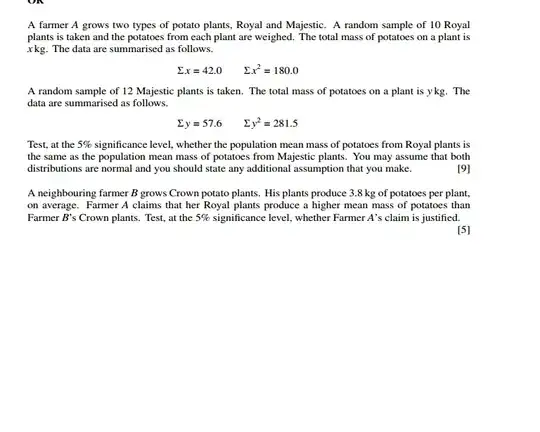I understand that LASSO and AIC are striking for a balance between model fit and size. However, how do they respectively measure the size/complexity of the model?
Does AIC measure the number of parameters and LASSO measures the coefficients?
I understand that LASSO and AIC are striking for a balance between model fit and size. However, how do they respectively measure the size/complexity of the model?
Does AIC measure the number of parameters and LASSO measures the coefficients?
Comparing AIC and LASSO is comparing apples and oranges.
LASSO is an estimator of the regression coefficients. It is the minimizer of a penalized/constrained least squares criterion. Which LASSO estimator to use (defined by the tuning parameter scaling the penalty or constraint set) is most commonly decided by cross-validation.
AIC, on the other hand, is an estimator of prediction error for a given estimator. Given a set of candidate estimators, one could compare these by comparing their respective AIC values. As you suggest, AIC does consider model complexity as it is partly a function of an estimator's degrees of freedom.
In principle, you could compare the set of LASSO estimators using a version of AIC rather than cross-validation (but this is potentially problematic, and is not advised in general). See Is it possible to calculate AIC and BIC for lasso regression models?.
So let's make an assumption of normality (so that MLE == OLS) and take a look at the AIC equation from wiki: AIC = 2k + n ln(RSS) here k is the number of parameters (variables), n is the sample size, and RSS is the residual sum of squares. So for a given k and n we minimize the AIC by simply fitting for standard ols coefficeints. In other words, it has nothing to do with our fitting procedure/coefficients. It is simply a cost function to compare across what we can change: the k. So the AIC is used to compare the same model with differing features to essentially find the model with the most bang for your buck. If k increases but your RSS does not decrease enough then your AIC will increase and you have a 'worse' model. It really is about the balance of k and RSS.
Lasso on the other hand is a cost function that we are optimizing for, so it does have to do with our coefficients. Specifically we choose coefficients which minimize: the sum of squared errors PLUS the sum of absolute value of our coefficients times a parameter lambda we select:
Basically, (assuming normality) the AIC will be minimized for a given k at OLS so the only real change we can make is changing k with different subsets. For Lasso we make changes by changing our coefficients and naturally we can select a coefficient of 0 to drop it.